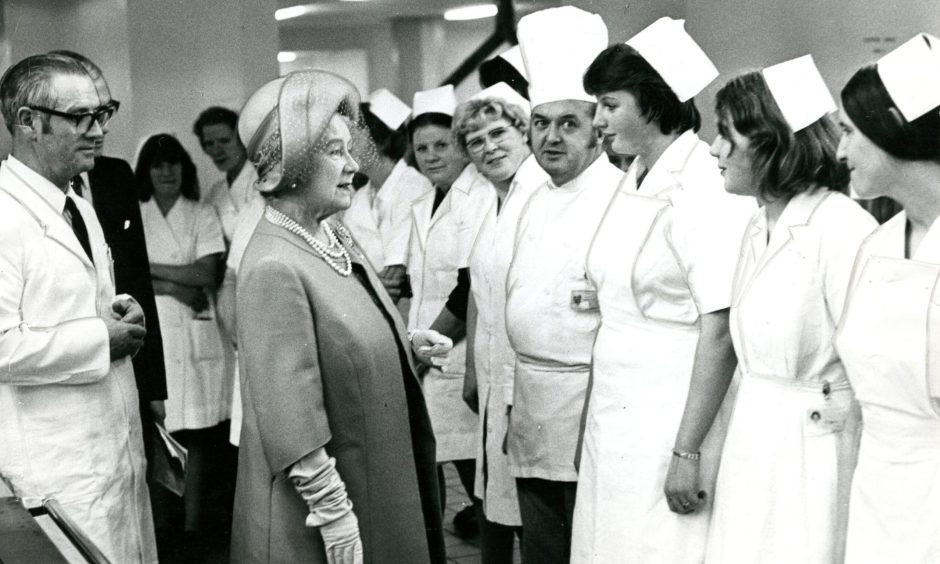
Dundee’s Ninewells Hospital had an auspicious start to life after being hailed as “the finest ever built in Britain”.
Having opened on January 31 1974, an out-of-town ambulance driver was charged with delivering the first patient across the city from Dundee Royal Infirmary.
He spent 20 minutes caught in an aimless loop of the access roads and car parks.
He was eventually flagged down by a breathless administrator waving a hanky.
History does not record what happened to the red-faced ambulanceman, other than that he left Ninewells with a hastily sketched map to pass on to colleagues.
Happily, the patient was safely tucked up in bed and the administrator had recovered his composure by the time the Queen Mother arrived to perform the formal opening of the UK’s most modern hospital on October 23 1974.
Nurses formed a guard of honour before she was shown around.
It was the first teaching hospital to be built since the Second World War
She said: “It gives me particular pleasure to be here today, for I have so many close links with this part of Scotland, originally from my home at Glamis and more recently as Chancellor of the University of Dundee.
“Although this is my first visit to the hospital and medical school since it was commissioned earlier this year, I’ve been kept well informed of its progress.
“Last July, after the graduation ceremony, I was happy to have an opportunity to come here and see the size and scope of this exciting project
“In many respects this magnificent building speaks for itself.
“The foresight of the planners, the genius of the designers, the skill of the builders, all are evident to the eye and greatly to be appreciated.
“All those concerned in these aspects of the undertaking can have a justifiable pride in what they have achieved.
“I’m certain that there is much here that will serve as a model for the future.
“I can readily understand that the commissioning of the hospital and the medical school must have entailed an immense effort by the staff of the board and the university, and I think that all of them are to be warmly congratulated on their endeavours, which have brought much of the hospital and medical school into use with unusual smoothness.
“Nothing that science can devise nor money provide, will be lacking for the treatment of the patients.
“But it will be for the medical and nursing staff to give that loving care to each person that comes to this hospital which is more precious than all else.”
How did staff get around Ninewells in 1974?
When it opened, hospital porters said they were having to walk 15 miles a day around the 230-acre site, while rumours spread that doctors and nurses were using roller skates and scooters to get around.
Such was the task of negotiating the corridors that more than 100 volunteers were called in to help point patients in the right direction.
The idea of building a new hospital in Dundee was proposed by the Eastern Regional Hospital Board in 1948 and given official government blessing in 1949.
The first approximate cost was £2m in 1951.
Crudens of Musselburgh were awarded the building contract with a tender of just over £10m after the architect’s final sketch plans were produced in 1962.
Work began in 1964 with completion scheduled for 1971.
The city’s most prestigious project was behind schedule and beyond estimate.
The engineering complex was completed in 1968.
A year later the residences for nursing staff and training school was finished.
The main ward block and medical physics and main theatre blocks were finished in 1972 and most remaining parts of the hospital were completed in 1973.
This included the concourse block, lecture theatre, library and museum.
Ninewells Hospital opened at a final cost of £25m with 15 operating theatres.
Wards were decorated in autumnal colours because they were deemed soothing.
It had a kitchen bigger than the largest church in Dundee.
The Queen Mother put everyone at ease at Ninewells Hospital opening
The Courier said it was a succession of “chats, cheers and handshakes once the serious business of declaring the hospital officially open was over”.
The Queen Mother made time for everyone.
She was still chatting to patients half an hour after she was due to leave.
She showed her overwhelming kindness and thought for others.
The Courier said it was obvious from the start this was an engagement much to the liking of the royal visitor and time went by the board.
She ended up staying for three hours.
The Courier said she was beautifully attired in an edge-to-edge collarless coat in deep turquoise over a toning printed silk dress.
Her matching hat had a wide turned-back brim and was enhanced with toning veiling.
She met friends old and new.
Auchterhouse Church raffle prize link
Amy Todd from Muirhead was a former nurse who trained at Dundee Royal Infirmary between 1917 and 1920.
She had a connection with the royal visitor.
Miss Todd told the royal visitor she won a beautiful gift in a raffle – a table lamp – which the Queen Mother had sent to Auchterhouse Church.
George Henderson from Dundee told the Queen Mother he was in the guard of honour when she, as Duchess of York, presented colours to The Black Watch.
He was also in the battalion when, as Queen, she inspected it at Aldershot, just prior to embarkation for France in 1939.
Mrs Margaret McNeill, Fairbairn Street, said: “I’ve only seen her in pictures.
“It’s fine to see her in reality.”
Mrs Isabella Findlay Barlow from Newport went further.
She told her: “This is the finest day of my life.”
Ninewells Hospital is a modern marvel
Principal James Drever of the University of Dundee said he spoke for the whole of the Tayside region when he thanked the Queen Mother for opening the hospital.
He presented her with a memento to mark the occasion.
It was a gold brooch with four Tay pearls mounted on amethyst.
As the years have gone by, the hospital has seen plenty more firsts and remains the envy of official parties still arriving from many parts of the world.
In between the two ends of life, Ninewells deals with everything from cuts, sprains and fractures to cancer care and neurosurgery.
The hospital continues to see the region put at the forefront of medicine worldwide.
Just as it did 50 years ago.
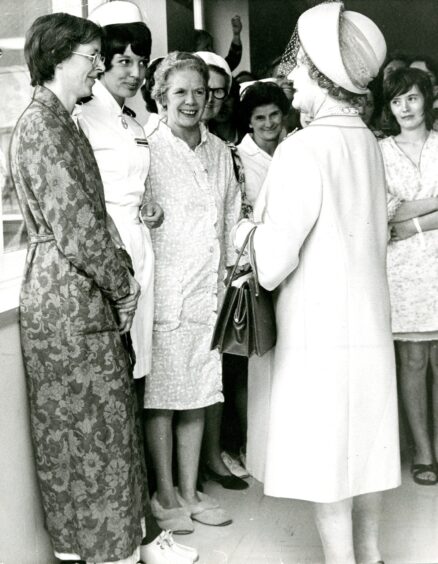
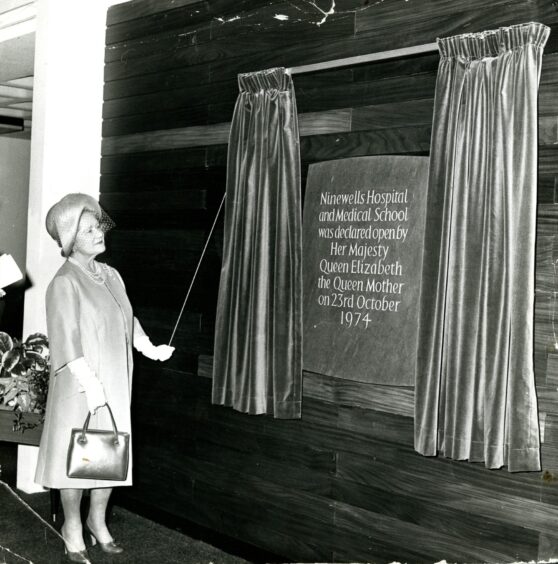
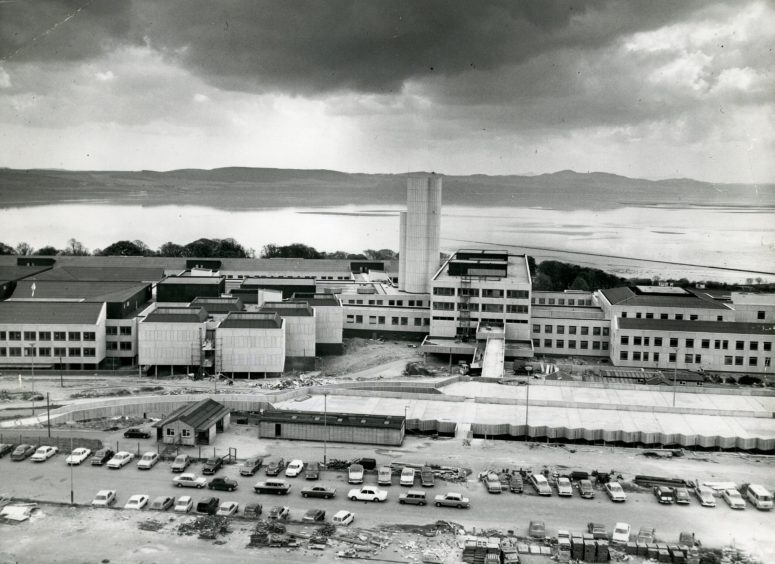
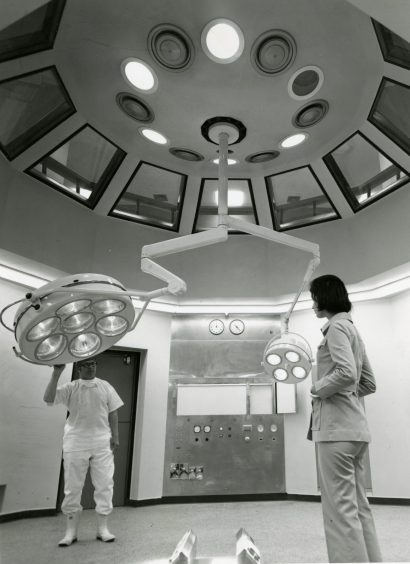
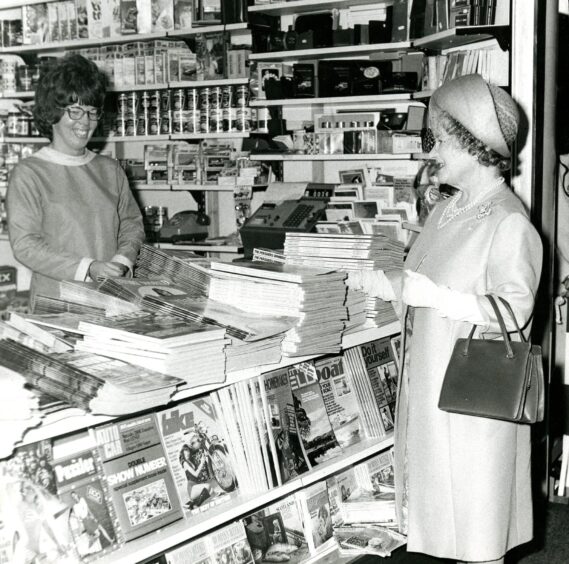
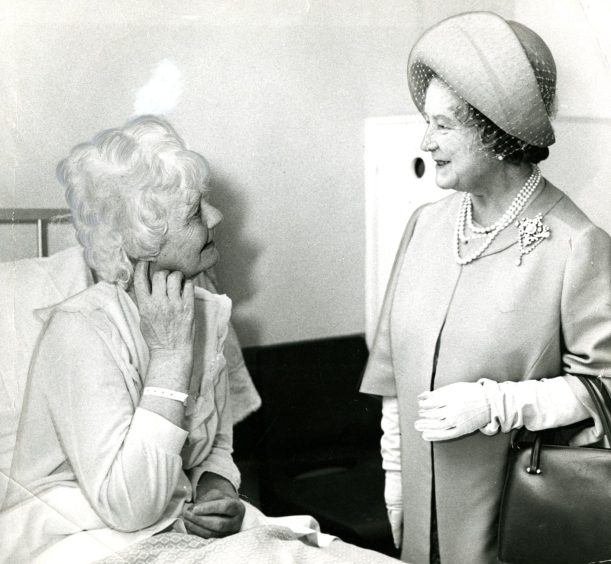
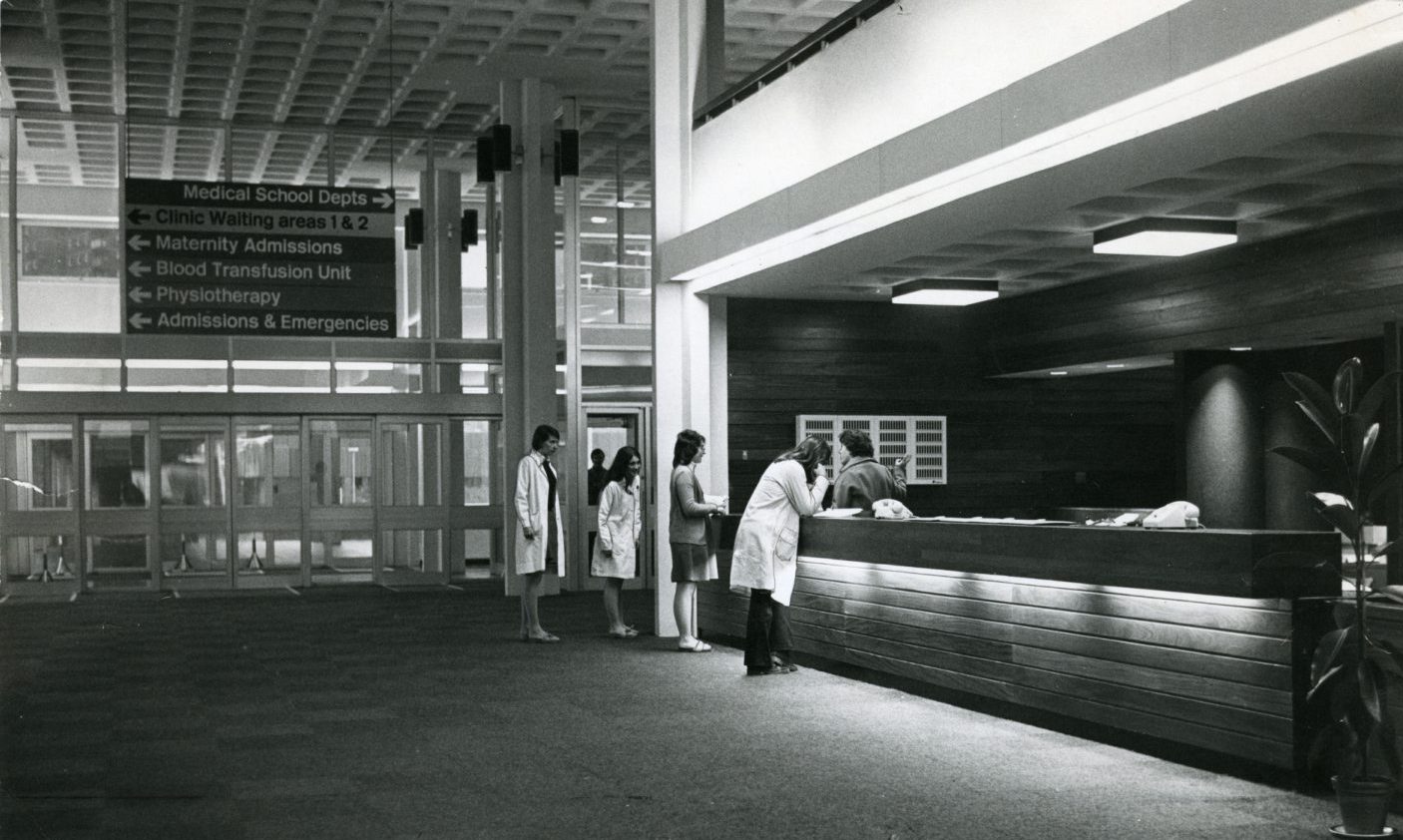










Conversation